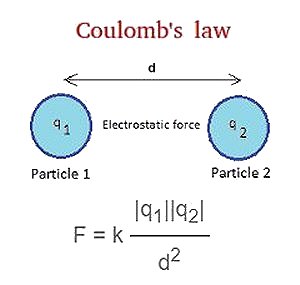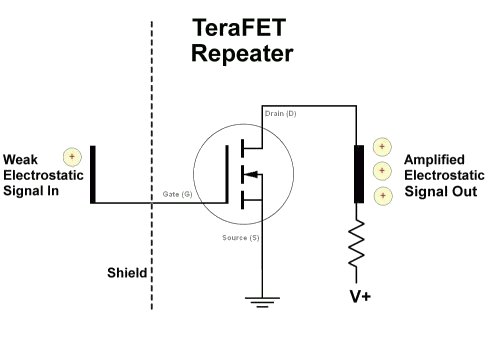

Scientists have long sought a faster-than-light (superluminal) means of transmitting information. But the laws of physics always seem to get in the way. Now recent discoveries regarding the propagation of electrostatic energy (EE) as well as ultra-fast transistor-based repeaters suggest there may be a way to achieve this when the applications are exclusively terrestrial (wired).

It has been known for years that electrostatic energy (EE) propagates at near infinite speeds when the polarized elements are in close proximity.(1) A good example of this is the coulomb force that binds electrons to the nucleus of an atom. And, since the coulomb force is a field, not a particle, it is not constrained by Einstein's 186,282 miles-per-second speed limit. This means that if we can modulate an electrostatic field and somehow propagate it over distance, we can achieve superluminal communications. The only limitation is that the distance between the source and the target be a small fraction of a wavelength at the carrier frequency.(2)
In November, 2023, University of Sussex researchers announced an alternative way to transmit Bluetooth data to mobile phones and other tech devices. They did this by modulating a low-intensity electric field.(3) While their primary intent was to reduce power consumption in a wireless device, this was proof-of-concept that information could be transmitted via an electrostatic field at distances up to 1 meter. While 1 meter is not very far, in a closed system such as a square tube, the electrostatic field could be strengthened to increase its range. Additionally, a closed system would allow for a dielectric medium with a higher relative permittivity (dielectric constant) than free space, extending the signal's reach.

A real-world system would need to be extended for hundreds or even thousands of miles to be useful. This would necessitate the use of "repeaters", similar to what is employed in fiber optic cables. Ultra-fast field-effect transistors could be used to boost the signal periodically with minimal propagation delay. Current technology includes graphene transistors that can operate at frequencies greater than 800 gigahertz. This means a signal delay of just tens of picoseconds at the repeater.
For example, let's make the first leg of our superluminal daisy chain 10 feet long. This is equivalent to about 10 nanoseconds travel time at light speed (c) and dictates our carrier frequency be limited to a fraction of 100 mhz. Choosing a carrier frequency of 10 mhz, our electrostatic carrier velocity would be several times light speed while remaining a robust medium to carry information. Say our EE velocity is 5c, transit time across 10 feet would be 2 nanoseconds. As such the additional repeater delay of tens of picoseconds would be negligible.
Using the above example, communicating across 1000 miles would require 528,000 repeater transistors. That many active devices would introduce significantly more noise into the signal, degrading it. Thus digital modulation, rather than analog, would be needed to retain signal integrity. And greater distances would mean even more transistors. So now the question becomes: "Is the cost-v-benefit economically viable?" If you're a high-frequency stock trader, the answer might be "Yes". Or if you're NASA Mission Control in Houston needing a rapid data link with Cape Canaveral, Florida, the answer might be "Yes". But for most of us, the cost could easily outpace even faster-than-light communications.
- E. Joe Eck
© 2024 - 2025 Superconductors.ORG
All rights reserved.
(1) Gasser, Wolfgang G. (2016) Experimental Clarification of Coulomb-Field Propagation; Superluminal Information Transfer Confirmed by Simple Experiment. https://www.pandualism.com/c/coulomb_experiment.html#:~:text=A%20simple%20experiment%20has%20been,at%20speed%20of%20light%20c.&text=The%20experiment%20uses%20a%20spark,capacitors%20of%20opposite%20electric%20charge
(2) Walker, W.D. (1998). Superluminal Propagation Speed of Longitudinally Oscillating Electrical Fields. In: Hunter, G., Jeffers, S., Vigier, JP. (eds) Causality and Locality in Modern Physics. Fundamental Theories of Physics, vol 97. Springer, Dordrecht.
https://doi.org/10.1007/978-94-017-0990-3_15
(3) Roggen, Daniel, et al (2023). Long in the Bluetooth: Sussex Scientists Develop a More Efficient Way to Transmit Data Between Our Devices. https://www.sussex.ac.uk/broadcast/read/62668#:~:text=Broadcast%3A%20News%20items,-Long%20in%20the&text=Professor%20Robert%20Prance%20and%20Professor,throughput%20needed%20for%20multimedia%20applications
 BACK to "News" page at Superconductors.ORG
BACK to "News" page at Superconductors.ORG